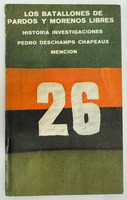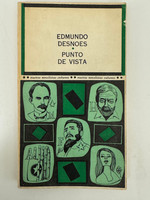- Travel
-
Exhibits
- La Portada Cubana
- Immortal Cuba: Artists Take on Their Heroes
- Seattle Poster Exhibit
- Sandra Dooley & Alejandrina Cué
- The Art of Wayacón
- Cuban Folk Art
- Cuba In Black And White
- 25 Years of Cuban Art Space
- Summer Folk Art Expo
- ¡SPRING AWAKENING FROM CUBA!
- Celebrating The Art Of Cuban Women
- Celebrating Paper, Affordable Art from Cuba
- Art of the Revolution
- Outsider Art
- Lost and Found
- En la lucha: Celebrating Cuban Women and Their Art
- Cuban Art Stash
- 100 Fires: 5 Cienfuegos Artists' Work on Paper
- Waya + Monte! Magic Realism in Cienfuegos
- Viva Cuba Viva! Poster Show
- Cultivando Sueños
- Black Lives Matter in Cuba Jan 9-March 27
- Leandro Soto: Crónicas visuales
- Cuban Canvas
-
Archive
- Global Reflection 2018: Spirit and Community
- Exhibit in the cloud: Contemporary Works on Paper
- MADE IN CUBA! MINNEAPOLIS EXHIBIT
- Cuban Posters and Photography from CCS collection
- AUTUMN SALE! Sept/Oct 2017
- SPRING ARTS AND CRAFT SALE
- Vuelo Directo/Non Stop: Alberto & Alejandro Lescay
- The Many Faces of Fidel
- Somos
- Made in Cuba!
- The US empire in Cuban graphics
- Made in Cuba/Seattle exhibit
- Entre Nos
- Looking Back
- Cuban Art Space
- Membership/Donate
- About Us
- Cuba News
-
The cover of "El bolero cubano" features an evocative brown-on-kraft-paper illustration depicting two figures in an intimate embrace beside a jukebox, framed by flowing decorative borders that echo the romantic, lyrical quality of the bolero itself. The monochromatic design by Marta Mosquera evokes nostalgia for the golden age of Cuban popular music, with its sketchy, expressive linework suggesting both movement and emotion. The back cover continues this aesthetic with an illustration of a traditional Cuban percussion instrument, reinforcing the book's focus on musical heritage. The earthy, unbleached paper stock and simple two-color printing reflect the material constraints of Cuba's Special Period in the 1990s while maintaining an elegant, understated design that complements the scholarly yet accessible nature of the text.
Published in 1994 by Editorial Oriente in Santiago de Cuba—the birthplace of the bolero—this volume provides a comprehensive history of the genre, documenting its rhythmic patterns and principal works, interpreters, and composers. The bolero emerged in Santiago de Cuba during the second half of the 19th century, rapidly expanding throughout the Caribbean and later to different Latin American countries. As heir to the Hispanic prose song tradition—strongly influenced by operatic arias, French romance, and Neapolitan song—the bolero underwent a process of Cubanization, acquiring evident rhythmic connections to dance and the habanera. Scholar Argeliers León traces its origins to the development of a new guitaristic accompaniment style in the previous century, characterized by strumming and punctuation that brought renewed contact with Yucatecan sounds through the presence of families and troupes from recently established Latin American republics and growing traffic between Mexico and Cuba's southern ports following the Spanish occupation of San Juan de Ulloa in 1825.
Helio Orovio stands among Cuba's most prestigious musicologists and has authored numerous publications, most notably the "Diccionario de la música cubana." His expertise brings scholarly rigor to this exploration of how the bolero, with its segmented and consistent rhythmic pattern accentuated in the first and second guitar, produced a new accompaniment style that came to be called, simply, "bolero"—or more emphatically, "bolereadamente." The book was edited by Ángela Hechavarría with corrections by Ana Alicia Vázquez N. and composition by Virginia Pacheco L., demonstrating the collaborative efforts of Cuban cultural workers during the economically challenging Special Period to preserve and document the island's musical heritage.
-
-
Discover More at the Center for Cuban Studies






